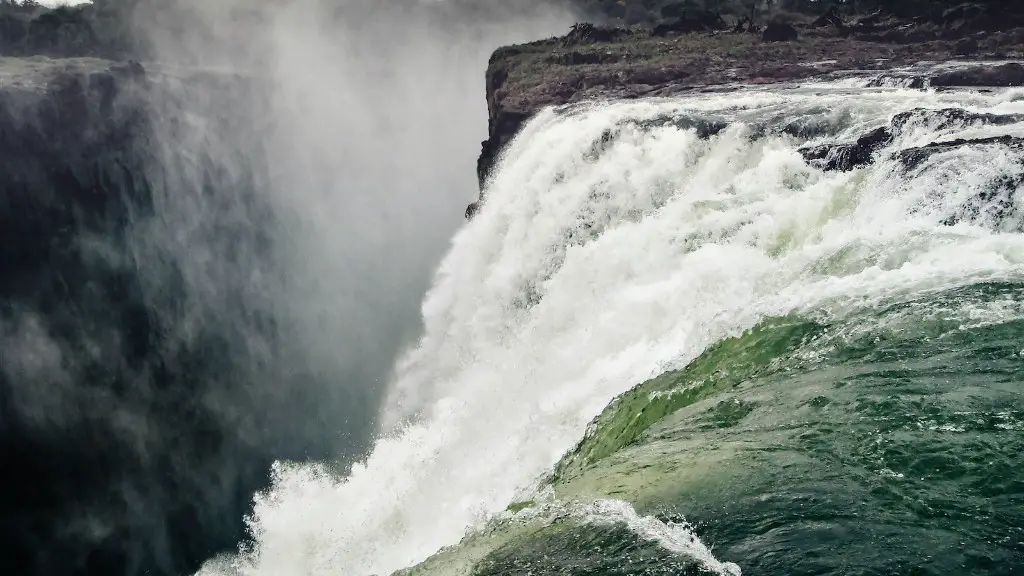Natural Causes of Flooding in Mississippi River
The Mississippi River has been adversely affected by flooding for thousands of years. The river’s watershed covers about half of the United States and parts of Canada, giving it one of the largest drainage systems in the world. In addition to its size, the geography of the Mississippi River watershed leads to frequent flooding. Its large, flat terrain is prone to substantial flooding when rivers present too much water. The Mississippi River carries sediment, rainwater, snowmelt and other such materials, causing it to rise and flood vast amounts of land.
History of the Mississippi River Flip
While flooding has been a part of Mississippi River history since ancient times, it really began to rise to prominence in the mid 19th century. The first large-scale leveeing began in the 1840s and was completed in the early 1900s. In 1917, the levees were upgraded to a much higher standard and extended further along the river. This major engineering project made the Mississippi River one of the most protected and managed waterways in the world.
Since the construction of the levees, there have been numerous severe flooding events along the Mississippi River. In 1927, a massive flood from the Ohio River caused a devastating flood on the Mississippi River. This event led to the relocation of people, the destruction of infrastructure and a wide-scale loss of land. Major floods occurred in 1936 and 1973, as well as in 1993, when the Mississippi River flooded an area stretching from St. Louis, Missouri, to the Gulf Coast.
Examining the Causes of Mississippi River Flooding
The causes of the Mississippi River flooding can be attributed to a variety of factors. Heavy rain or snowmelt can cause the river to overflow its banks, leading to dangerous flooding conditions. Other causes include river engineering projects, melting glaciers and tectonic activity. Human activities such as farming, urban development and deforestation can also contribute to the problem, by impairing water absorption capacity.
Rising sea levels due to global warming are also thought to affect river flooding. Along the Gulf Coast, sea level rise is leading to increased coastal flooding, and the consequent surge of water can cause massive floods in the Mississippi River. In addition, the melting of the Arctic ice sheets is considered to be a major contributing factor to rising sea levels.
Reducing the Impact of Mississippi River Flooding
The federal government has employed various strategies to reduce the impact of flooding along the Mississippi River. These efforts include the implementation of floodplain management plans, the construction of dams and levees, and the use of flood diversion projects. Floodplain management plans involve the establishment of flood control policies, while flood diversion projects involve the use of channels and controlling structures to divert water away from vulnerable areas.
If flood protection measures fail to contain the flood, then emergency response plans can be implemented. These plans include evacuation, sandbagging and monitoring of levee breaches. The National Weather Service also plays an important role in the mitigation process, providing accurate weather forecasts and issuing flood warnings.
Long Term Solutions for Mississippi River Flooding
Long term solutions for Mississippi River flooding require a multi-faceted approach. Efforts must be made to improve infrastructure, such as dams, levees and flood control projects, in order to reduce the effects of flooding. In addition, efforts must be made to reduce the human activities that contribute to flooding, such as farming and deforestation. As global warming continues to worsen, it is important to focus on reducing the emissions of greenhouse gases.
Climate change adaptation strategies should also be employed in order to reduce the frequency of future floods along the Mississippi River. This includes implementing strategies such as restoring wetlands and flood plains, as well as constructing natural levees. It is also important to incorporate sustainable land use practices into the planning and design process, in order to ensure the protection of vulnerable areas.
Improved Early Warning Systems for Mississippi River Flooding
Recent research has focused on improving early warning systems for Mississippi River flooding to reduce the impact of major floods. By improving the monitoring and warning systems in place, communities can mitigate the impact of severe flooding events. Through the implementation of new technologies such as satellite imagery, real-time flood mapping and flood depth measurements, it is possible to gain a better understanding of the flooding conditions along the Mississippi River.
Research into better forecasting technologies is also underway. With the help of complex modelling and simulations, researchers are able to gain insight into the potential effects of flooding along the Mississippi River. By understanding the potential consequences of a major flooding event, communities can prepare for, and mitigate the effects of, a flood.
Efforts to Mitigate the Impact of Mississippi River Flooding
Efforts to mitigate the impact of Mississippi River flooding are ongoing. In 2016, the Mississippi Delta Constructors organization was formed in order to improve the region’s resilience to flooding. The organization is dedicated to helping communities across the region prepare for future flooding events. It focuses on providing technical assistance and resources to local governments and organizations that are affected by flooding. In addition, the organization promotes the development of new technologies, such as flood prediction models, and the building of more resilient infrastructure.
Various other organizations are also dedicated to reducing the impact of Mississippi River flooding. For example, the Mississippi River Basin Alliance works to promote conservation and restoration efforts with the goal of improving water quality and flood prevention capabilities. In addition, the America’s Watershed Initiative seeks to safeguard and restore the health of the Mississippi River through the collaborative efforts of local, state and federal partners.
Reconstruction Efforts Following Disasterous Missisippi River Flooding Events
Following major flooding events, the Mississippi River Valley is often in need of reconstruction. Extensive damage to roads and bridges requires action from state and federal governments in order to restore infrastructure. Reconstruction efforts often involve the use of large construction equipment, and the employment of rebuilding teams. Financing for these projects comes from the Federal Emergency Management Agency (FEMA) and other government-level organizations.
In addition to infrastructure repair, numerous other efforts to restore the environment, such as wetlands restoration, are often employed. These efforts are typically conducted in collaboration with various scientific and environmental organizations. Dredging and sediment removal is also commonly conducted in order to restore the basin and surrounding ecosystems.
Conclusion
The Mississippi River has been affected by flooding for thousands of years. Despite efforts taken to lessen the impact of the floods, they remain a dangerous threat to the region. While there is still much work to be done in order to mitigate the risks of future flooding, recent efforts have shown promise in reducing their effects. Through the efforts of local and federal organizations, the Mississippi River Valley can remain safe and resilient to flooding.




